
For a lot of people, January–the start of the new year–is the season of hopeful resolutions. While I’m not a big fan of resolutions–at least not any that involve weight–I do enjoy an opportunity to take stock of my life and find ways to be more helpful, more engaged, and more compassionate.
For me, though, the impulse to commit to new things doesn’t tend to happen around New Year’s so much as it does in September. Perhaps this is just the fact that I now feel as though I’ve been a student forever, and autumn always means the start of a new academic year. Or perhaps it’s just that fall is my favorite season, and I tend to greet it with tremendous energy and excitement about all things, especially things that I think will allow me to make a difference.
Two weekends ago, over Labor Day, my boyfriend and I took a day trip to Woodstock Farm Animal Sanctuary. This is the spot where, in 2009, I first was inspired to put animals and animal rights at the front and center of my veganism.
I grew up in a big city, and I just didn’t have much of a chance to interact with animals in an intimate way. I had a companion animal, but I didn’t have any exposure to farm animals. Visiting Woodstock FAS had a tremendous impact on me. Up until that point, I’d certainly liked to think of myself as someone who cared about animals and would do them no harm, but I nevertheless had a lot of hesitation about identifying with animal rights; in fact, as I mention in my book, I almost made a conscious effort not to identify with animal rights, and was quick to assure people that I was vegan for “health reasons only.”
Who knows what was behind all of this; maybe I was afraid to think too hard about how animals are commodified by humans because I felt some guilt about the fact that I still partook in much of it (I was still buying leather, among a lot of other non-vegan things). Perhaps I was afraid of being associated with the infamous (and oh-so-unfair) “angry vegan” stereotype. Maybe I didn’t want to start identifying with animal rights because I was afraid I’d be holding myself to a standard of conscientiousness that I couldn’t maintain or live up to.
Honestly, I think it was all of these things. But the moment I really let animals into my heart, and gathered up the courage to identify as somebody who actively opposes their commodification, my experience of being vegan was enriched in wonderful and lasting ways.
For obvious reasons, Woodstock FAS has a very special place in my heart. I was so excited to share it with my boyfriend, who had never been to an animal sanctuary before. We ended up having a fabulous day: the perfect mixture of contemplative and fun.
We took the bus from Manhattan, which took a little longer than we were expecting. As soon as we arrived, we hopped on a tour of the farm, led by Jenny Brown, Woodstock’s passionate founder.
Jenny has a wonderful way of integrating hard facts about factory farming into her tour without making the experience too grim or too difficult for anyone. As she leads the group, she introduces everyone to each animal by name, tells the animal’s story, and shares sweet, often hilarious anecdotes about him or her. I was impressed by how well she managed to strike up a vital dialogue while also keeping the mood light and fun.
As we visited the chickens, for example, Jenny shared a lot of sobering facts about how egg laying hens are treated on factory farms, and how male chicks are commonly disposed of through maceration, which is precisely what it sounds like (killing of male chicks, by the way, happens on many a farm that identifies as “free range,” organic, and/or identify with the small farming model, too). She debunked some of the myths of what “free range” means (it’s often a life no better than battery cages), and described the profound toll that egg production takes on a female chicken’s body.
But after all this, we got to feed the chickens and get to know them a bit, which was a great antidote to the sad facts Jenny had shared. It was particularly fun watching kids partake in feeding, squealing with glee as the chickens pecked at their hands (OK, I may also have squealed with glee).
Next we moved on to the ducks. We heard a bit about foie gras production in the US (ironic, since the country’s only foie gras producer, Hudson Valley Foie Gras, isn’t far from Woodstock), as well as the horrors of down production. Such important information; I once thought that down was a totally innocuous commodity, until I learned more about the tremendous cruelty involved in its production.
The ducks looked happy as can be. There were a few breeds, too, all of them so distinct and lovely.
Our next stop was one of the two fields where cows graze. I was pretty excited about this, as I adore cows and was hoping we’d get to spend some up-close-and-personal-time with them. We did, with a beautiful creature named Dylan.
Dylan’s rescue story is pretty amazing. He’s a Holstein, a type of cow that’s popular for milk production. Since the males aren’t as valued as females, they’re usually separated from their mothers within 48 hours of birth and raised as veal. That was Dylan’s fate; he was found tied to a post, laying in his own feces, a day away from being auctioned off by his farmer. A couple took pity on him and convinced the farmer to give him up instead, and he made it to Woodstock. He’s incredibly friendly, and enjoyed getting some kale and romaine lettuce and apples from kids on the tour.
As the day went by, we also got to see the pigs at the farm. Anyone who’s read my posts from Poplar Springs knows that I think pigs are pretty amazing! I enjoyed spending some time with them.
Most of the animals at Woodstock escaped from live kill markets in the NYC area or fell off trucks en route to slaughter. A great many of them arrived at Woodstock FAS with injuries or illnesses, and consequently they have special needs. This is especially apparent among the sheep and goats (goat meat is a popular commodity at live kill markets). A number of them are missing limbs or have crippling arthritis. Still, they’re all so friendly, and so lively.
As we were hanging with the sheep and goats, one particular sheep came over to me and rested his head on my thigh. This is Felix, and he’s super special.
Felix arrived at Woodstock as a baby. It’s unclear what happened, but it’s likely that he’d been attacked by a predator who ripped off a back leg. The farmer who owned him didn’t want to pay for expensive veterinary care, so he was tossed in a pen and slated to be “culled” for use as meat later that day. A farm employee took pity, and transported him to WFAS, where he was destined to get quality veterinary care. Felix lived in the house with Jenny and her husband, Doug, until he was old enough to join the other sheep. Now full grown, he is one of the friendliest, gentlest, attention-seeking sheep and loves to meet new people.
Before our trip, my boyfriend and I knew we wanted to sponsor an animal; a year-long sponsorship was, in fact, my boyfriend’s birthday gift to me this year (and no gift could have been more meaningful). As soon as I met Felix, I knew I wanted him to be the animal we helped to support.
As it turns out, this was wonderful timing. Felix just got a sophisticated prosthesis to help him move around! As you can see, his older prosthesis wasn’t as sleek or as functional.
To care for animals so thoughtfully at WFAS requires resources from supporters like me and like you. If anybody is in the New York City area and would like to consider sponsoring a friend at Woodstock, you can get all the details here.
And if you’d like to hear more about Felix and his rescue story, you can read all the details here.
This visit to Woodstock really got me thinking about renewing my commitment to animals this coming year. As I sat at my desk and pondered what I might do to make a difference, I thought of ten things that we all can do to help give animals freer, kinder, and more just lives. Here’s my list:
1. Go vegan. Over 56 billion farm animals are killed each year for unnecessary human consumption. There is arguably no more powerful choice you can make to exercise kindness and compassion toward animals than the choice to abstain from eating them, and their products.
2. Visit or volunteer at a farm animal sanctuary. Farm animal sanctuaries help to protect, care for, and rescue animals. But they also serve a vital educative purpose. Children and adults who’ve never had a chance to interact with farm animals can take some time to get to know these intelligent, kind, social, and loyal creatures, and perhaps to make some connections between the animals we cherish and care for in our homes (dogs and cats) and the animals we consume by the billions.
To find an animal sanctuary near you, check out this comprehensive list.
3. Volunteer at your local animal shelter. Animal shelters are always in need of some help, and no matter where you live, there’s likely to be one relatively nearby. See if you can go and walk dogs, help to clean kennels, change water or food, or hang signs.
4. Get on social media. Volunteering your time may not be possible for you, given your work schedule, but you can always help animals by retweeting petitions, sharing facts about animals on Facebook, sharing wonderful vegan food, or promoting awareness about great animal non-profits.
5. Foster or adopt. There are countless dogs, cats, and other companion animals out there who desperately need food, shelter, and love. Visit your local shelter and talk to them about becoming a foster home, or, if you’re in a position to do it, consider giving a needy animal a great home.
6. Spend some time with an animal in your life. If you have a companion animal, take a few extra moments to pet, play with, walk, or communicate with him or her. If a good friend of yours has a dog or a cat or a bird or any other animal, offer to come over and play. Even fifteen minutes of playtime with an animal you love can be enough to remind you why it’s so important to fight for humane and respectful treatment of animals everywhere.
7. Buy cruelty free. Do whatever you can to seek out shampoo, soap, toothpaste, deodorant, and other personal care items that haven’t been created with gruesome animal testing, or with the use of animal products. And, to whatever extent you can, try to avoid purchasing leather (a byproduct of the meat industry), down, fur, wool, and other clothing made from animal products. You can find fantastic vegan footwear at Mooshoes and apparel all over the web and in stores.
8. Start something. There are so many incredible ways that you use your talents and interests to help animals. If you love to cook, then start a monthly vegan potluck in your neighborhood, on your college campus, or in your building. If you’re a student, consider starting some sort of organization on campus. Screen movies, share delicious food, and harnass energy around the idea of doing something great for animals.
9. Donate. Making a donation of any amount to your favorite animal organization (or donating time as a volunteer) will ensure that these groups can continue fighting, educating, and advocating. Explore the many incredible non-profits out there who are doing great work on behalf of our animal friends, and show them that you want them to continue on their mission.
10. Share your perspective. As a new vegan, I was very shy about my commitment to animals. Over time, talking to people about my lifestyle has become one of my favorite experiences. There are still so many misconceptions out there about vegans and veganism. The more each of us do our part to demonstrate how caring, thoughtful, and diverse the vegan community is, the better.
It can be frightening to talk about veganism, especially if it’s new to you, so don’t force yourself into any uncomfortable places. But know that you’re probably far more articulate and persuasive than you think you are when you talk to others about your choices. Don’t be afraid to give an honest answer when somebody asks you why you’re vegan. Don’t be afraid to tell your friends–vegan and non-vegan alike–about why the lifestyle is important to you. Develop strategies for having respectful (and productive) interchanges with family members.
If sharing verbally isn’t for you, then feel free to share culinarily! Invite a couple of colleagues or friends over for a smashing vegan meal–and take the time to mention why vegan cooking appeals to you. Make banana soft serve for someone who’s never tasted it before. Bring a container of raw, vegan brownie bites to work.
Food is pleasure, food is community, food is connection, and food is life. Show people how delicious and satisfying vegan food is, and perhaps you can move them one step closer to a new perspective.
I once saw a debate on a friend’s Facebook page about whether or not vegan food blogging lulls us into thinking we’re doing “enough,” and discourages us from doing more concrete, action-oriented things (like leafleting or volunteering). I don’t think so; vegan food blogging and other forms of vegan activism are not mutually exclusive. In fact, the longer I blog, the more committed I am to taking my activism off of the page and out into the world. And, as somebody who lives to eat, who writes about EDs, and who believes in the healing powers of food, nothing could be a more sensible way for me to begin my activist work than the creation (and sharing) of food I love.
When we read about what happens to animals year in and year out on farms and in factories and in labs, it’s easy to get discouraged. But these small actions–visiting a sanctuary, purchasing a great new vegan beauty product, sharing a vegan dish with friends, getting involved with an organization you admire–are a reminder that everything counts.
Happy Friday, friends.
xo
This post may contain affiliate links. If you use these links to buy something I may earn a commission. Visit my privacy policy to learn more.


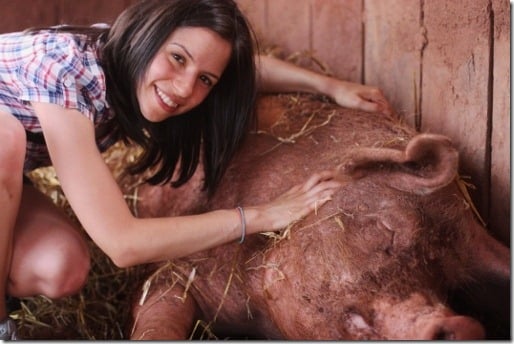
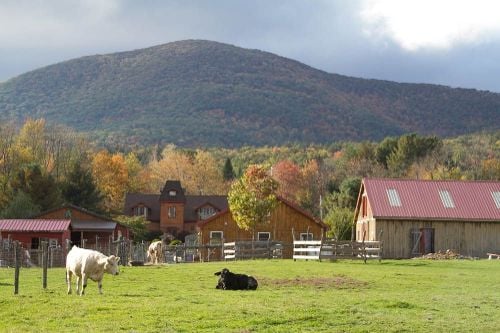


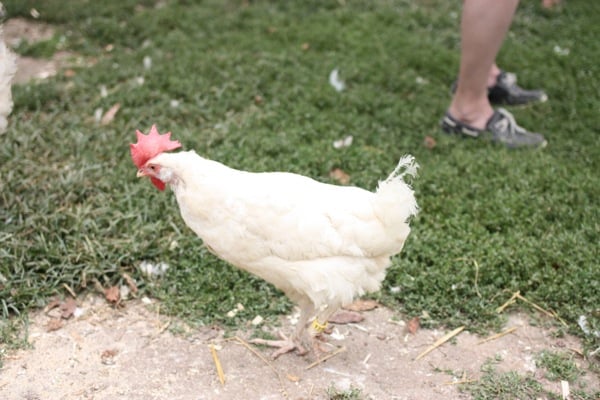
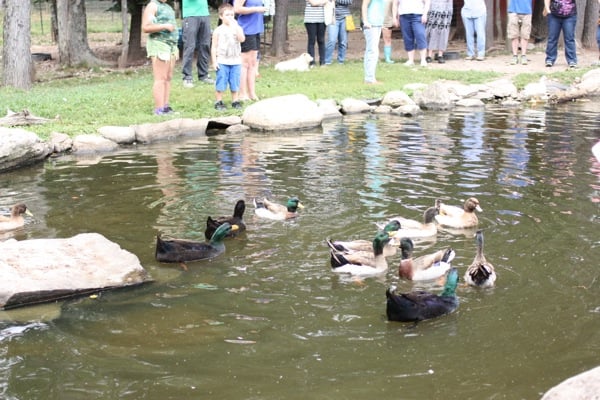
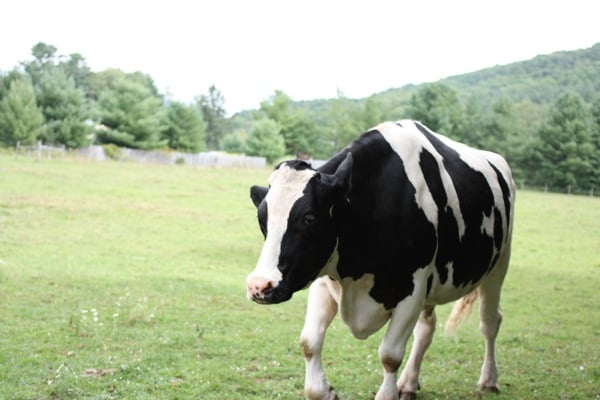
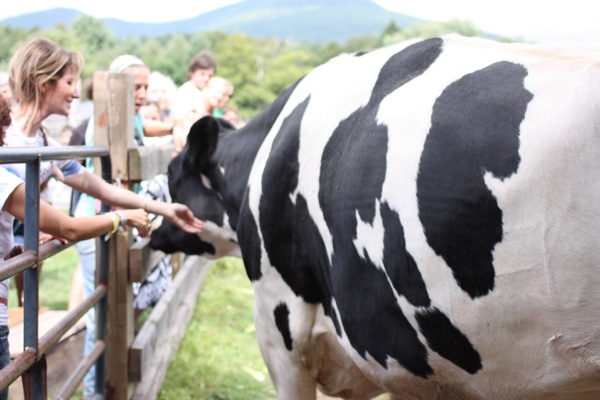






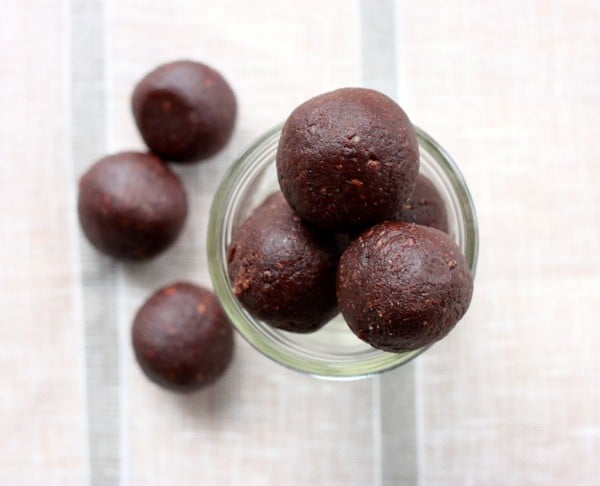
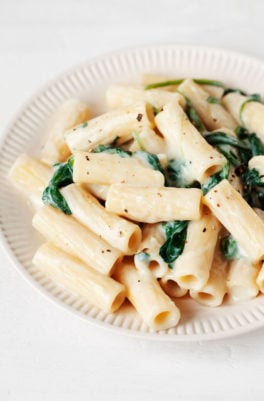
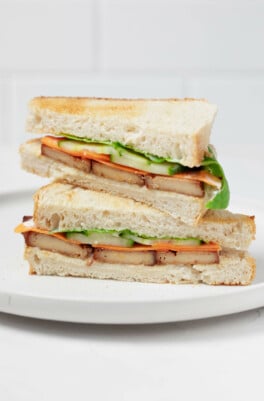

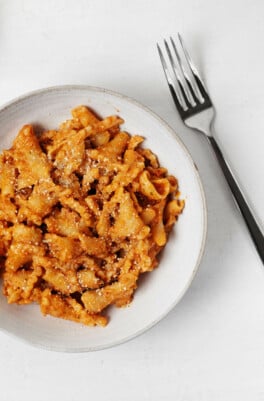
Leave a Comment
Thank you for sharing your experiences at Woodstock! I love farm animal sanctuaries. So wonderful to see these animals in such loving environments. But they truly are the lucky ones.
Just a question you can ignore if you want, but I’m curious if the new boyfriend is vegan? I only ask because you mention he came and if he isn’t vegan I was curious if the visit impacted him (as it did you years ago).
My sister and I sponsored an animal in our mom’s name for Christmas last year and it was her favorite present. Now I think I want to sponsor one of my own. This was beautiful, Gena. You’re an inspiration in many ways.
One of my favorite-ever posts of yours!
This was so wonderful to read. My husband and I spent a weekend at Woodstock back in May for our wedding anniversary, and reading about your time there makes me want to go back so much! Did you meet Bert, the goat who thinks he’s a sheep?
The animals are so adorable! Thank you for helping these animals, it’s always nice to see people go out of their ways to support them. I am definitely going to visit my local farm soon!
http://mindfullyaudrina.blogspot.com/
A beautiful post, Gena. I’ve sponsored several animals at Woodstock, and am excited to visit one day soon.
Great ideas! I can personally vouch that having a dog has deepened my connection to animals and strengthened my vegan convictions. Before, I didn’t consider myself an animal lover, but, thanks to blogs like yours, I have become much more aware of animals rights issues and ways to be an advocate for animal welfare.
I hate when people say blogging isn’t “doing” anything. It’s doing a lot! (and it’s a LOT of work, I hate the assumption that it’s like a baby-hobby, it’s hard work!)
I think having a resource of your thoughts and recipes can be tremendous for inciting change. For instance, when people asking me what I eat, I often refer them to my Instagram account. They have instant access to over 500 pictures of amazing, varied, delicious, beautiful vegan food. In mere moments I have shown them, conclusively and without argument, that a vegan can eat very well indeed, with very little effort.
By having a blog, I’m able to network with movers and shakers in the vegan community, stay on top of and spread awareness on things even most vegans don’t know, and have a venue where I get to continually articulate and refine my thoughts, which makes me better for those in person conversations that we vegans seem to find ourselves in all the time.
Your blog, Gena, was absolutely one of the key things that inspired me to actually make the switch to veganism years ago (I knew I needed to, but it felt overwhelming and unattainable until I saw your simple, delicious, healthy recipes). So, in conclusion, blogs rock!
I’m so glad you did decide to eventually start identifying with the ethical side of veganism because these types of posts are always my favorite from you- I really find them very motivating. I would love to visit a sanctuary (something I’ve never done), did you visit any that you enjoyed while living in D.C. (where I live)?
What a beautiful story. I’m hoping to start up a vegan cooking blog because it’s another vegan cooking blog that convinced me to go vegan! While we can always do more, this is no small contribution either. I think a lot of people discount vegan food, because they think it doesn’t taste good… that’s how I was. But once I started cooking delicious, I can’t stop eating this food, I was hooked!
Gena, I am not a vegan, as you know, but I nevertheless believe it is extremely important for people to be informed of the horrific conditions under which animals are raised, to produce food for which we have no biological need, and of the deleterious impacts of factory farming, not only on the well-being of the animals, who are forced to endure the exploitation and cruelty, but on the environment, etc. Perhaps some of us will choose to continue to utilize/consume animal products, but we should do so not out of blissful ignorance, but knowing the full impacts of our decisions. I do think vegans have to stop making such a big deal over honey though … there is no way (in my opinion, and I’m extremely sensitive to vegan arguments otherwise) to do so without undermining your cause.
I’m curious how you do consume animal products while being aware of their impact? ‘Organic, grass-fed’ for example is actually far worse for the environment than factory farming so is there a way you see to ethically consume animals or do you just do it with full knowledge of the impact it has on the lives of animals and the planet? Genuinely interested in a non-vegan but fully aware perspective on this (as I just personally couldn’t continue to justify animal consumption once I discovered the reality).
Love this Gena….looks like an amazing day for the two of you and what a gift that you shared it with us….I am going to have my boyz read it when they get home – they are all animal lovers but one is in particular. We have donated in the past but maybe for Christmas, we will sponsor a particular animal….thanks for the inspiration (and going to make those balls for our hike tomorrow 🙂
Even though food blogging isn’t activism in the sense of getting out and physically doing something, I still think it’s activism in a way, because you get people like me who stumble upon all of these vegan food blogs in attempts to find delicious and healthy recipes and then after reading through all of your stories, are inspired to give the lifestyle a try. People that would love to try out veganism but aren’t sure where to start can use the oodles of vegan blogs out there to help get them started. I think these sort of blogs are a very useful and important tool to getting the message across in this day and age 🙂
I totally agree, Jessica!
I loved this post, Gena. I often shy away from talking about the ethical side of being vegan because of its uncomfortable nature. However, I realise now that not speaking my truth isn’t helping anyone. I love the idea of showcasing veganism through food, plus you can never really go wrong with banana soft serve! 😉
Jenny Brown is an amazing woman! I loved her book so much about herself and Woodstock. One of my favorite nonfiction books ever! I hope to visit some day…..and hug a cow (my dream!)
This is SO great! Definitely an important cause.
Really interesting post, thanks. My youth in the country, where I watched cows go off to slaughter and saw pigs in tiny dirty huts made me vegan, but my daughter, 17, is a city girl. She made the choice to go vegan through reading blogs and fb pages, so I agree with you about the power of social media. I did my share of activism when I was younger, and I am running a half marathon for the vegan society though. Whatever anyone does is great, however “small”; I think Colleen is right.
I don’t typically comment on blog posts, even though I follow yours regularly… I appreciated so much your thoughts and suggestions. I have been vegan for 7 years but like you have struggled with ethical vs financial decisions (do I get rid of my leather boots? wool socks? to buy their new vegan counterparts?, etc.) and it is so refreshing to have a clear look at the issues we all have to make decisions about. I have been in tears since I read this, wanting to do so much more, wanting to “perfect” my lifestyle, and it can be so frustrating that I am limited. I love your suggestions and insight. your work is appreciated! 🙂
I’m still stunned at the size of the pig! I guess I thought more along Charlotte’s Web Wilbur size was normal… I think it’s time I reconnected with animals too, like you I wasn’t raised around them but I have a deep and meaningful need to remind myself now why I should have been. There’s so much I didn’t know in this post, and it’s hard to look at food the same now. I think that was your point., and it made it to the right place.
I LOVE that quote at the end of this post. I say it often 🙂
Lovely post, Gena, and a great call to action. I think it’s easy to get caught up in the perfect kind of activism, when in reality there are tons of ways to be an activist that fit any kind of personality type. I also think blogging and cooking and sharing food is a great way to create conversation.
I just moved to Seattle, and you motivated me to email Pigs Peace Sanctuary to see if I can get a visit in next week before school starts!